Seeing trees as sacred is not an anomaly; it’s the fact that we’ve somehow lost this fellowship that’s the anomaly.
Ten minutes later, we pass a 12th century wooden lighthouse. Previously at the ocean’s edge, today it stands several kilometers inland, thanks to the gradual land-reclamation and urbanization projects that have taken place here from around 1610, and continue today. The lighthouse is no longer lit, but for a moment, I imagine it still working, its light shining not into the ocean, but into a sea of buildings.
We continue past the lighthouse. Our destination is the well-forested park just across the way.
Once a week, my wife Suhee and I make this short morning trip to say hello to one of our favorite trees in the city, a towering, sprawling Camphor. The Camphor tree is around two centuries in age, and has captured our affection since we first came upon it. On that first meeting our bikes halted in unison at the tree. Not only the shape and size, but the way this tree held the space was somehow mesmerizing. We both put our feet on the ground, heads slowly bent upwards, mouths agape. Since then, we’ve brought many friends to meet this tree: artists, farmers, and even a botanist from the United States who remarked “That’s a Camphor alright. Golly. I’ve just never seen one so huge.” Golly was a pretty strong word for this man.
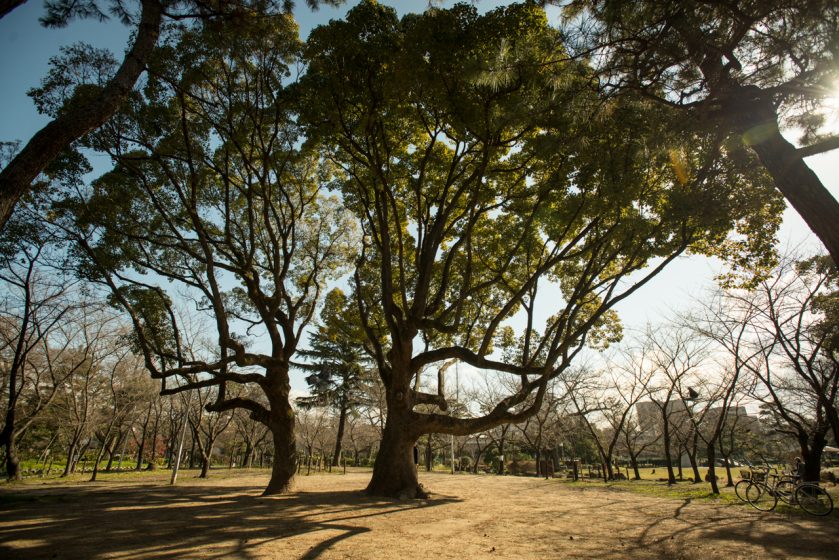
In our weekly visits to the tree, we normally have a bow and a smile, touch the tree, and enjoy some time sitting under its canopy with a cup of tea or coffee. As we sit, the sparrows, crows and turtle doves actively chirp, caw, and rustle above and around, and the “Nankai Line” train, on the opposite side of the park, rattles past with typical punctuality, shuttling people in or out of the city center every three minutes and thirty seconds. But time has a habit of slowing down here. Sometimes those three minutes and thirty seconds seem like hours.
This past week I didn’t have the time – aka dedication – to visit the Camphor, but Suhee did. She reported that while she was there, a cute old couple approached her, and the tree. The couple happily talked about the grand tree, informing her that it was the oldest in the park. After touching the tree, the old couple said goodbye and continued on their way.
It was moving for Suhee to see this old couple, who have the same habit in visiting the tree as we’ve adopted. Hearing the story of a couple who have been at it for much longer than we have brought a sense of respect, and of comfort.
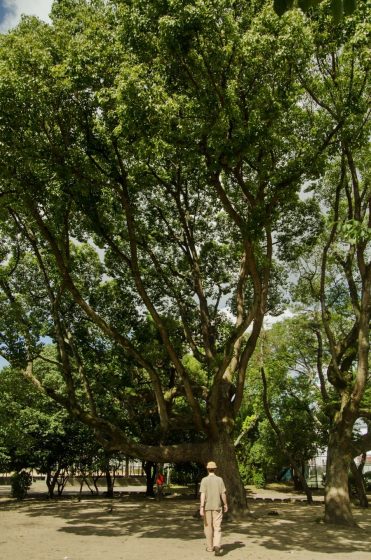
Indeed, when one looks for it, there is much proof that we humans know ways to live with this Earth.
Though large urban forests are not common in most Japanese neighborhoods, old trees are many. These trees are found variously in the small parks occurring every few blocks, or in the Buddhist temples punctuating the urban landscape, nearly all of which prominently feature at least a few large, old trees.
So too do the numerous Shinto shrines in the city host tree elders. In these sacred spaces, trees are often honored like royalty, with entire complexes dedicated to nature, torii gates leading up to five-hundred-year-old trees, and regular visitors who stand in awe and pray to these tree elders.
“Bow. Two Claps. Pray to the Tree Kami.”
This is what an old man once told me as I approached one of the old enshrined trees in Osaka. The word “Kami”, which the man used, is sometimes translated to “God” in Western writing. More accurately in this case, it refers to the essence or spirit of a natural element.
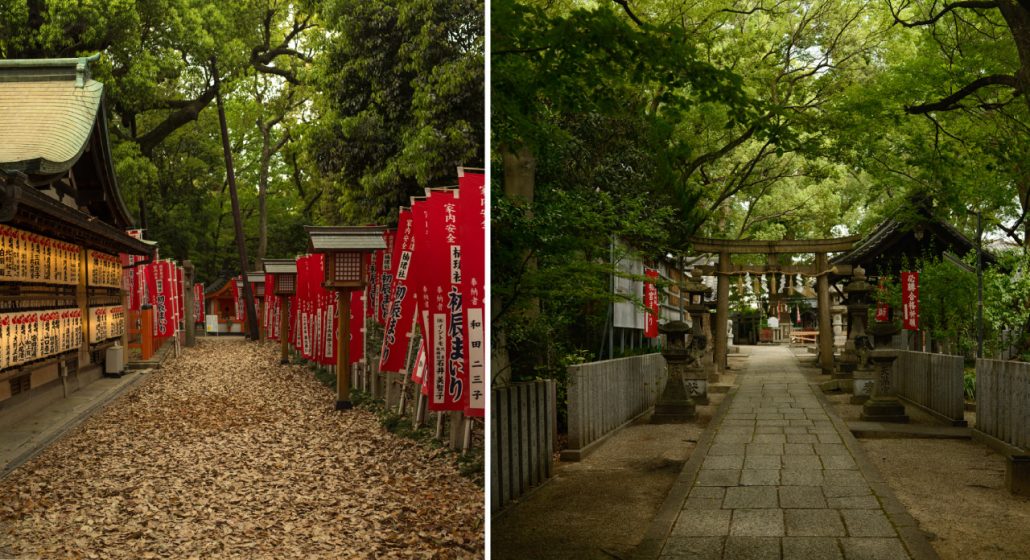
The old man was more or less instructing me how to pray to the essence of a tree.
Even where not explicitly stated, such places play the role of guardians of the urban forest. More than this, they are spaces where urban dwellers can connect to something older and grander than themselves, whether it’s through tradition and ceremony, or by simply walking through these spaces on a regular basis, as many do.
Some will call this an antiquated thought.
Perhaps it is.
Is there room for such “old ideas” in the future of sustainable cities?
Seeing trees as wise elders
With this question in mind, I’d like to try an exercise in imagination. If you will be so kind as to play along, try to imagine a curiously beautiful tree in your own neighborhood. Any tree will do, but it’s best if it’s a tree in a place nearby that you can remember.
With the image of that tree in your mind, now imagine that someone wraps it with a ribbon, gives it a wooden sign to signify its birthday, species, and perhaps some interesting fact about it, and then constructs a permeable border—not a chain-link fence, but something like an informal area of acknowledgment—around it. People in the neighborhood, too, are intrigued by the tree, and even more so, by the way one of their neighbors has thus highlighted it. Imagine that these neighbors also begin to develop some matter of friendly affection for the tree. When they pass by, they give a nod, one elderly woman gives a bow. Even those who don’t physically acknowledge the tree nevertheless maintain an awareness of its curious beauty. Imagine further now, that a few times a year, some of these neighbors begin to gather to have a celebration around the tree. Formally, the celebration may not necessarily be about the tree. Informally, the tree is the master of ceremonies.
Now imagine this happening at the same site, with the same tree, for a few hundred years.
By this point it would be improbable that some deep relationship had not been formed between the community at-large and this tree. Although this story may not be familiar to many of us, it is somehow easy for many of us to imagine. This is because it is not an isolated or new story. It is a part of the story of humanity, ever since humanity began. The importance of fellowship with trees is historically, a large part of who we are as a species.
Indeed, seeing trees as sacred is not an anomaly; it’s the fact that we’ve somehow lost this fellowship that is an anomaly.
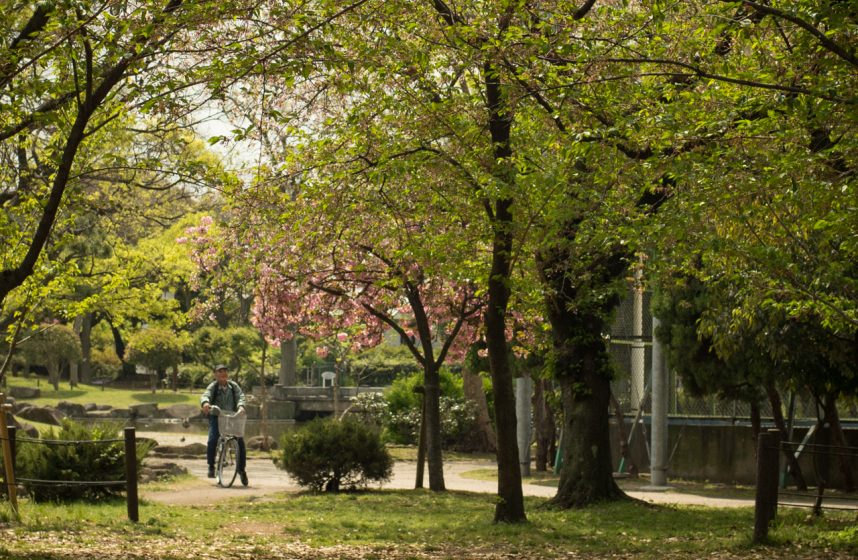
There is an essence about this story—and these spaces as they exist in the real world—that tugs at the deepest parts of our being, an essence which is the product of generations of grateful interactions between human beings and trees.
Throughout human history and in every part of the world where they grow, trees have been held as a symbol of the natural and inevitable cycle of life and death which we are all a part of, and further, as our wisest living elders. Quite literally, our oldest trees hold the knowledge of beings who have lived for thousands of years, interacting with the Earth and universe along wholly different modes and timespans than we humans can ever experience.
Nearby where I grew up in California, there are trees living that were born before recorded human history, before any Greek philosopher uttered a word, before any religious text was written, before the rational mind was idolized. Surely, if wisdom comes with age, then trees are among the wisest living beings on this Earth. Good reason then, why the ancient roots of the word “wisdom” are found in the Scandanavian word for wood or forest.
Is it possible to re-ignite such an understanding and reverence in the places we live today?
It is possible; and it’s happening as we speak.
Cultivating the seeds biophilia
Biophilia is not a quality that some humans have and some humans lack.
So far as we can see, it is a quality that all human beings have, but which has been suppressed by various contemporary cultural beliefs that run contrary to it. In this way, we might see biophilia as a seed, sometimes dormant, waiting as seeds do, for the right conditions to grow. Today’s cultural rituals of consumerism and the quest for endless monetary growth are quite effective means of keeping these seeds dormant.
But what are the conditions for growing these seeds?
For some hints, we can simply look to examples where biophilia is alive and growing. These examples exist not only in Japanese Shinto shrines, but in nearly every corner of this Earth, from the sacred and culturally valued trees across India, to laws like Ley de Derechos de la Madre Tierra, giving rights to nature in Bolivia and now dozens of other countries, states, and cities. And lest you think that the United States is bound to be woefully behind in this respect, remember that it was an American lawyer and court justice who gave us serious pause to consider the inherent rights of nature—see the 1972 legal essay Should Trees Have Standing, and the dissenting remarks that it spurred in a court case—almost 50 years ago.
Practical, on-the-ground actions are also many, from The New York City Tree Map and Trees for All in the United States, to efforts in tree-culture-cultivation in Singapore, in Uganda, and in the EU, just to name a few examples from contributors here at The Nature of Cities.
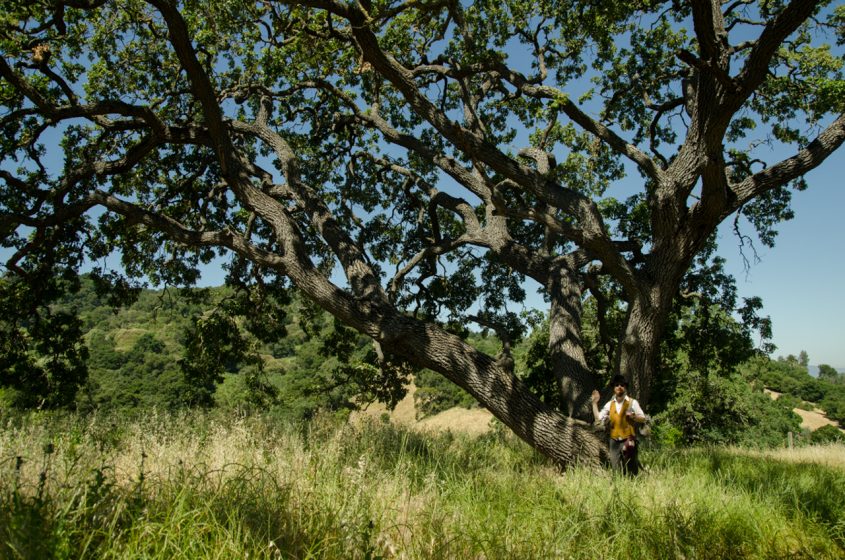
At the intersection of these two categories—the cultural and the practical—there are ecological artists who have been working for several decades, to help us question and better understand the possibilities in human-tree relations. These efforts range from Alan Sonfist’s proposal in the 1960s to return small pockets of New York City into forests that reflected the city’s pre-colonial state, to the Joseph Beuys’ act of dumping 7,000 large basalt columns in a public space, and demanding that each one can only be removed if an oak tree is planted along with it. Sonfist’s project helped form a serious culture of re-greening New York City, and Beuys’ work likewise, resulted in 7,000 oak trees being planted in Kassel, Germany, a movement which spread to other cities soon after.
More recently, the ecological artist duo Tim Collins and Reiko Goto lassoed some biologists and musicians to help them listen to the breath of a tree. They built a living installation called Plein Air, where visitors can do just that; trees breathe, visitors listen. The work of Collins and Goto gives a technological twist to an age-old understanding that yes, humans can learn to listen to trees.
The question we face now, is what we’ll do with our listening ability.
Trees are fundamental for life
On the most basic of levels, without trees, our cities could not exist.
This is not to say that a city with no trees will suddenly disappear, for surely there are cities built within naturally treeless landscapes , but rather that we must acknowledge the ways in which the tree supports our very lives here. It cleans and produces the air we breathe; it regulates our microclimates, cools our sweltering asphalt and concrete landscapes; it provides stability to our soil, our rivers, mountains, and fields; it creates the conditions for increased biodiversity, offering home, habitat, and shelter for so many other living things who, in turn, lend their services to innumerable other parts of our urban ecosystems.
Recent research tells us that the tree is no less than a keystone structure for life on this earth.
Can a building, street, sidewalk, or parking lot offer any more than this?
In some cases, this question is rhetorical. In others however, perhaps the balance of the needs of humans and trees might necessitate the street winning this argument. This depends on where you’re looking from however, and we can quite easily argue that all too often, our view is exclusively from the human point. Without much thought, we have a nasty habit of saying yes to convenient infrastructure, and no to what we view as “encroaching” nature.
But when a tree asks for more space in the city, who is encroaching on who?
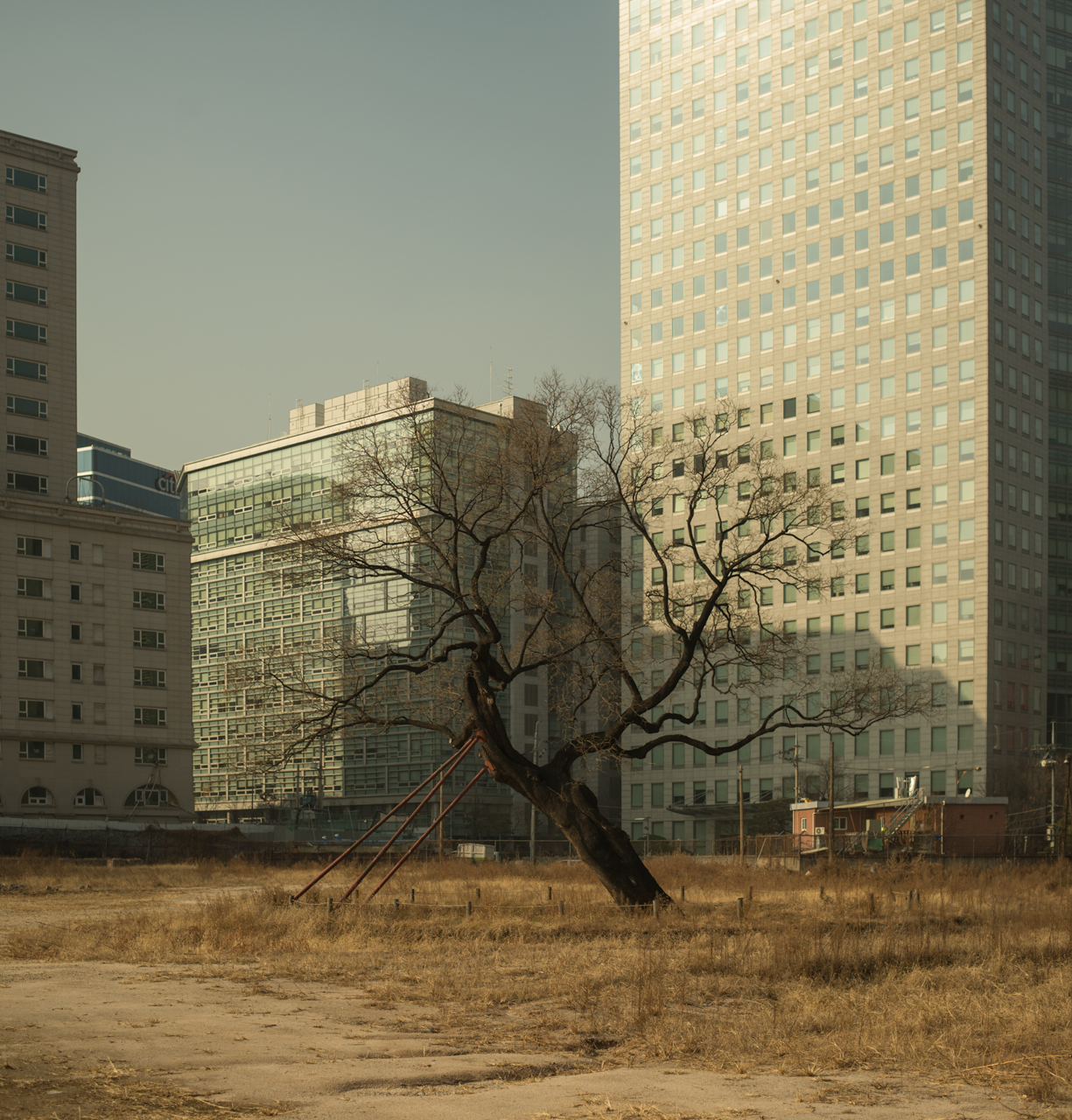
Our attempts to answer such questions inevitably turn to economic quantification, which in turn, can only render trees as mere commodities. For this, we can never rely solely on economic justification, either remove or to save trees. Look no further than the Sheffield Tree Massacre for the end result of this logic.
If a tree offers so much to us beyond the economic, if a tree is sacred, if a tree is indeed a keystone of our environmental wellness, and a reason for our continued existence here, then why not at least learn to listen to its voice?
If we did listen, how might the things we hear transform the landscape of a city over years, decades, and centuries?
A city infrastructure, dictated by trees
One way to answer this, would be to follow a road similar to that of the aforementioned legal efforts to value and honor trees. These efforts however, still inherently suffer a deficiency in forcing trees to answer to the human legal and monetary system. From the point of view of the tree, this must surely be absurd.
As a practicing ecological artist, I propose an alternative, in the form of a framework for a municipal code. Treat this framework as an open challenge to the municipal leaders who truly believe in building an ecologically sustainable, resilient city, which goes as such:
In the case where a mature tree requests more space within the urban domain [as in the case where a tree’s roots or branches encroach into existing or planned public or private space or utilities, or when said tree obstructs human rights of way, or otherwise leads to the deterioration or instability of public or private infrastructure] the tree will not be altered, killed, or otherwise harmed. Instead, the tree will be allowed to grow, and human habits and existing city infrastructure will be altered in order to accommodate the tree’s request for more space.
Is the above request outlandish?
Tongue-in-cheek. Admittedly it sides with the tree.
We’re not used to siding with a tree.
We’re not used to accepting that a tree’s intentions and needs might hold as much value as our own.
Inasmuch, the above text is a reversal of our current anthropocentric ways of dealing with trees.
Today, we assume that urban structures are the most important things on Earth, and so these structures, and the perceived human needs tied to them, necessarily control how cities develop. This is so even when we claim “ecological” development.
But what would a city look like if trees had complete control over development? Would trees allow concessions to humans, judging them by nature’s growth requirements rather than human industry’s, holding high court to decide whether a human development was sufficiently benefiting nature’s economy?
What would the bottom line judgment from a convening of trees?
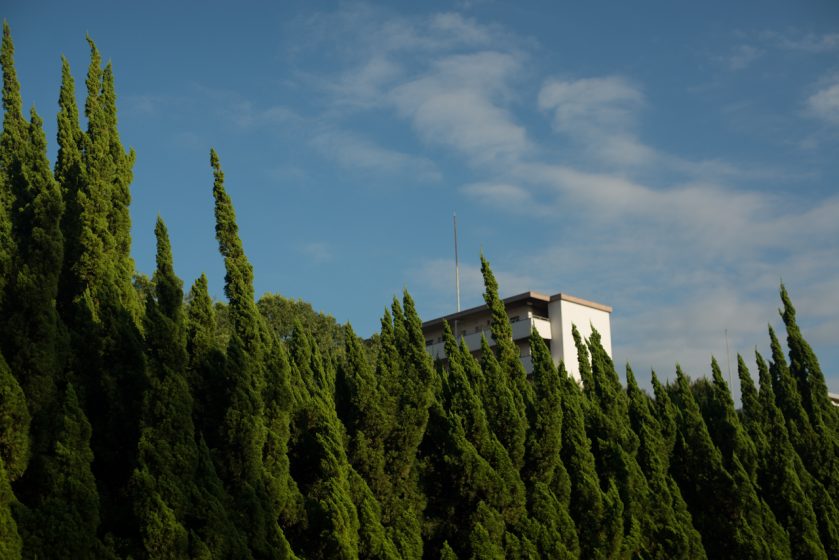
The suggestion goes far beyond what most of us would consider reasonable.
In doing so, where does it draw our imaginations?
When I imagine the city of the future, I imagine scenarios such as those involving the elder trees in so many Japanese neighborhoods. I imagine unfathomably sacred spaces in which one feels closer to the real world in which our cities are built; spaces where one feels respect and reverence for the living world which we inhabit. I imagine cities centered around trees, cities that grow organically, not brazenly existing in spite of their trees, but gently morphing over time together with their trees.
Collective experience from our biological sciences, from ecopsychology, from environmental law, and as well from thousands of neighborhoods, cities, and cultures around the world that favor their trees, all would suggest that this kind of future is not only desirable, but deliverable.
As more nature is incorporated into the places we live, humans will naturally become more closely attuned to the rhythm and reality of their inherent individual relationships with nature. The dormant seeds of biophillia can be cultivated within us, and when they are, our culture may again stand a chance to make decisions that ensure the well-being of our future, and of the Earth’s. Together.
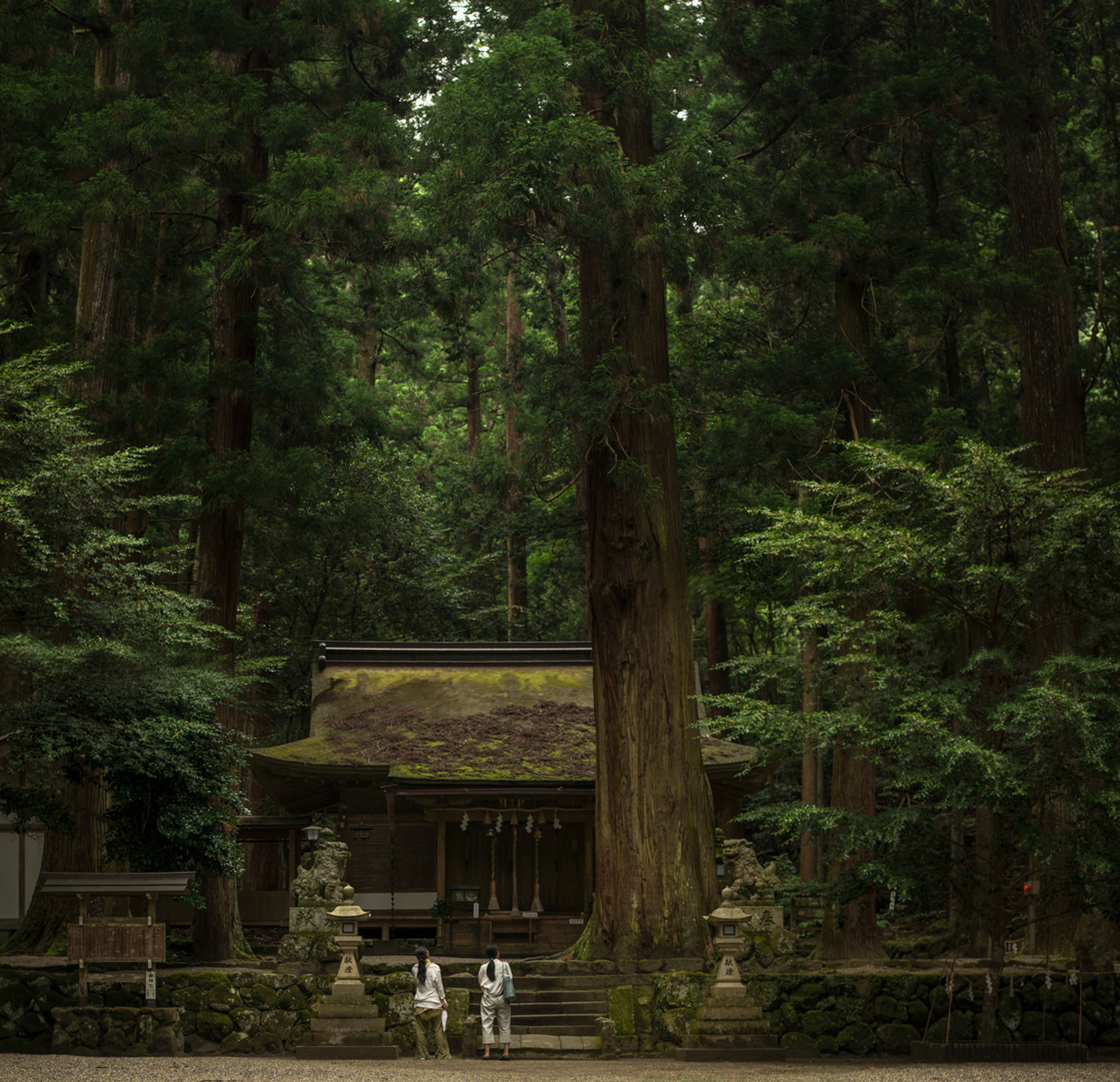
As a culture, we need to be unflinchingly realistic with ourselves and what we are doing as human beings on this Earth. Our contemporary mainstream view—a cocktail of continued economic growth, waste, resource extraction, and technological fixes, all of it divorced from really knowing nature—is perhaps the most unrealistic, and dangerous, proposition one could possibly imagine for humanity.
If we are serious about our calls for sustainability, for environmental equity, and for resilience, we must begin to work together to build something more truthful, honest, and realistic.
That something cannot be dictated by any human being. Whatever form it takes will require us to learn to work with nature, to learn to listen to nature, and like any good team player, to do things like giving our tree elders a chance to call the shots once in a while.
We don’t necessarily need a tree shrine, an eco-artwork, or municipal code to do any of this—though these things likely won’t hurt.
All we truly need is a tree and some intention.
This, at least, is within the capability of each of us.
All of which makes me think, I shouldn’t miss the next visit to our favorite camphor.
Patrick M. Lydon
Osaka
References and Suggested Reading:
Anderson M.K. (2013) Tending the Wild, Berkeley: University of California Press
Stone C.D. (1972) Should Trees Have Standing?–Towards Legal Rights for Natural Objects, Southern California Law Review 45: 450-501
Hageneder, F. (2005) The Meaning of Trees, San Francisco: Chronicle Books
Manning A., Fischer J., Lindenmayer D.B (2006) Scattered trees are keystone structures – Implications for conservation, Biological Conservation 132:3 311-321
Naess A. (2010) The Ecology of Wisdom, Berkeley: Counterpoint Publishing
Sewall L. (1995) ‘The Skill of Ecological Perception’ in T. Roszak, M. Gomes, A. Kanner (eds) Ecopsychology, Berkeley and London: University of California Press, Sierra Club


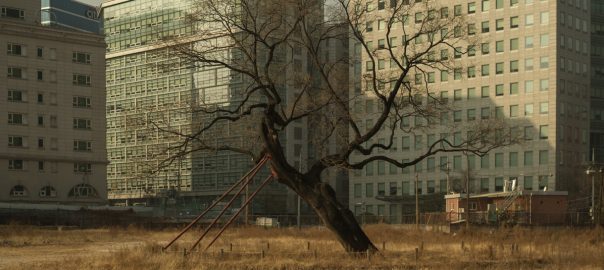
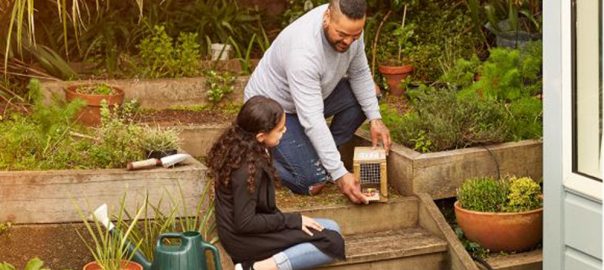
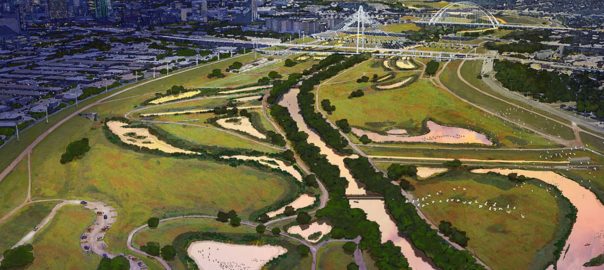
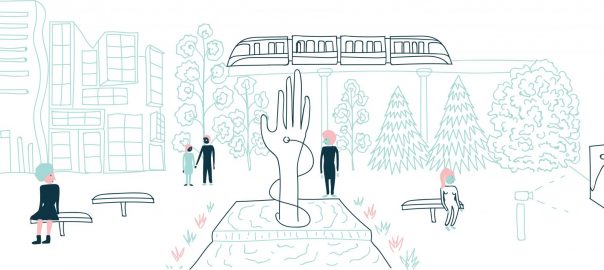

Leave a Reply